A change management plan is a critical part of any project plan and can be the difference between project success and failure. Let’s break down how to create one so you can better manage project change, no matter where it shows up in your project life cycle.
What Is a Change Management Plan?
A change management plan is a document that describes how change is planned, implemented and monitored in a project or across an organization. You can think of a change management plan as a roadmap that shows all the steps you need to take from identifying the change to realizing it. This plan not only sets the course by which you can execute the change but asks how it will impact the project or organization, how workflows will be affected and whether it will alter your relationship with your customers or teams.
By using an effective change management plan, you can manage the process and be more productive in its execution. It helps you control the budget, schedule, scope and resources. It even impacts your communication process. In fact, the change management plan is systemic, touching on all aspects of project management. When done correctly, it will minimize the impact on your project or organization.

Get your free
Change Management Plan Template
Use this free Change Management Plan Template for Word to manage your projects better.
What Are the Key Elements of a Change Management Plan?
Define the following elements below to create an effective change plan for your project.
Change Management Documentation: A change management plan should include documents and forms that will facilitate the process of evaluating, approving and implementing changes.
- Implementation plan
- Communication plan
- Change impact assessment
- Change readiness assessment
- Change orders and change request forms
- Change management log
Change Management Team: Define who will be doing what in your change management plan. Who has the authority to submit a change order request, who reviews them and who authorizes them? You’ll need to define roles and responsibilities for effective change control.
- Change Control Board: Staff your change control board with people who will receive the change requests and have the authority to approve or veto them.
- Change Champion: These are employees tasked with communicating the change, advocating for it and sharing information with others through the implementation process.
- Change Agent: Change agents have more accountability than champions as they’re involved in the process of planning the execution of change management activities.
- Change Management Software: A project planning software can help you keep track of changes through every project phase until it’s finally resolved.
Create Online Change Management Plans With ProjectManager
Project management software helps when executing a change management plan. ProjectManager has an award-winning Gantt chart that can be used to create change management or any project plan. Users can then leverage our other project views, including the kanban board, sheet, list and calendar to manage change.
- Link task dependencies to avoid costly delays
- Free guest licenses offer stakeholders real-time insights into change management plans
- Generate in-depth dashboards and reports to manage changes that can impact the project. Try it free
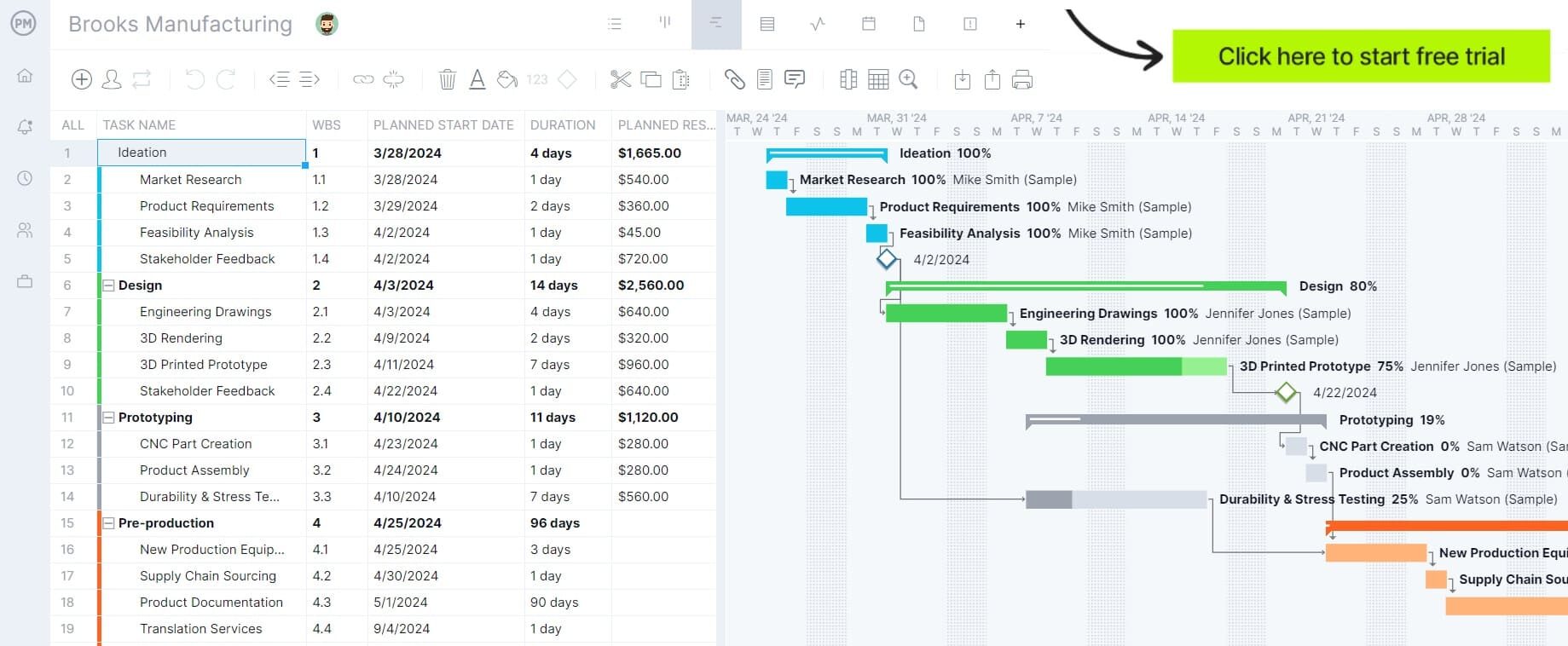
Change Management Plan Example
This change management plan example covers key areas you’ll need to look for when managing project or organizational changes.
1. Change Description
Begin by defining the purpose of your change, areas of impact, key goals and objectives, the change management model that will be used and any assumptions, risks and constraints that might affect its execution.
2. Roles and Responsibilities
Describe the different change management roles that will help execute the change. Ideally, there should be a change control board in charge of approving or rejecting changes along with other roles such as change agents and change champions.
3. Stakeholder Map
A stakeholder map is a simple chart that helps change management teams identify key stakeholders and prioritize communication efforts based on their level of interest and influence over a project.
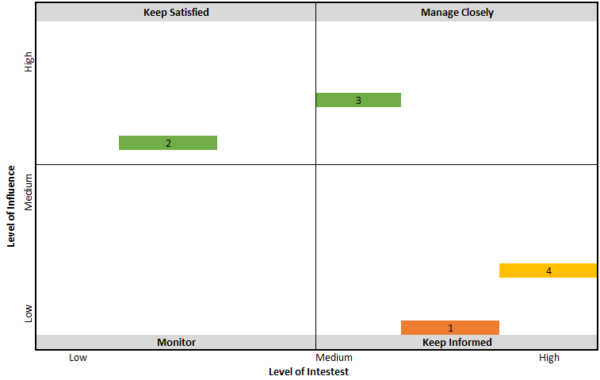
4. Gap Analysis
A gap analysis helps contrast the current state of a process, project plan or organization and a desired future state that will be reached through the proposed change.
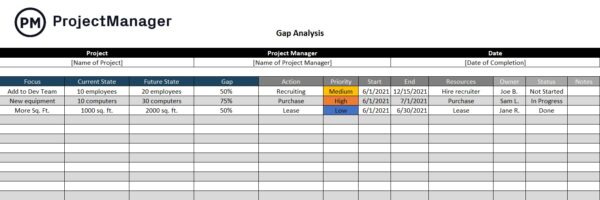
5. Cost-Benefit Analysis
Depending on the scale of your change, you might need to conduct a cost-benefit analysis to determine whether the benefits of your change outweigh the cost of the resources that will be required.
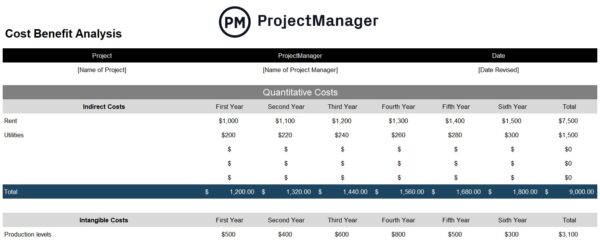
6. Change Readiness Assessment
A change readiness assessment consists of creating a matrix that evaluates key areas of your organization and assigns them a numeric value to measure how prepared the organization is to implement a change initiative.

7. Change Impact Assessment
A change impact analysis gauges the potential impact of a proposed change based on its scope, cost, timeline and priority, among other things.
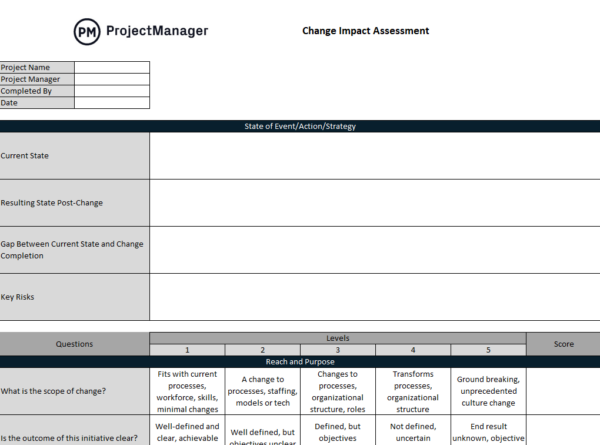
8. Implementation Plan
You need an implementation plan to effectively submit, evaluate, authorize, manage and control the change requests. This is an action plan that explains the steps that will be taken to implement a change and a timeline for their execution.

9. Risk Matrix
This risk analysis tool allows organizations to list all the potential risks associated with the change implementation plan and analyze their potential impact and likelihood.
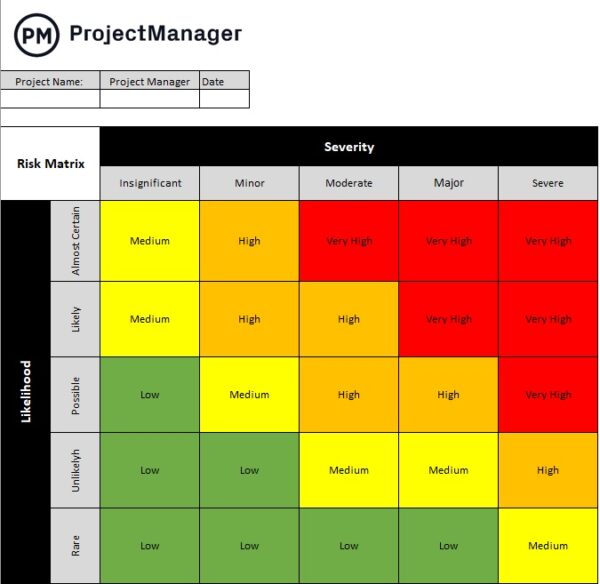
10. Communication Plan
Describe how changes will be communicated by defining what channels of communication will be used and the frequency in which stakeholders will receive status reports, among other important details.
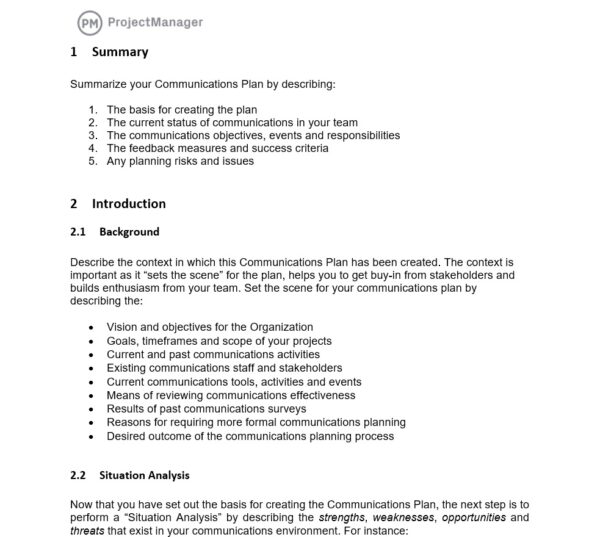
11. Change Order Request Form
A change management document that allows internal team members, clients or any other stakeholder to suggest changes to a project or organization.
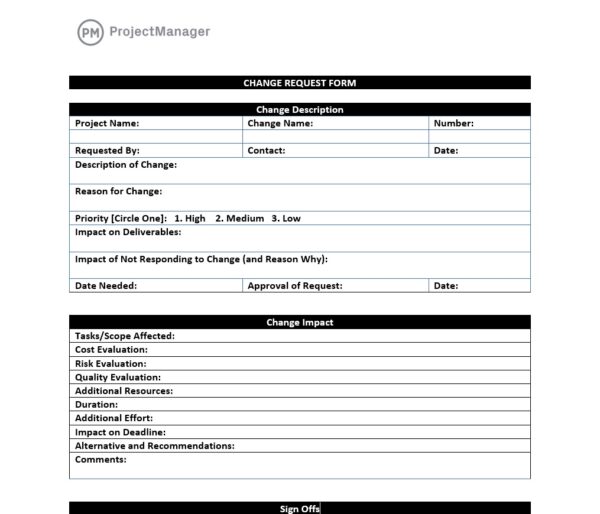
12. Change Order Form
Once the change control board approves the change order request, a change order form can be issued to begin executing the change as soon as possible.
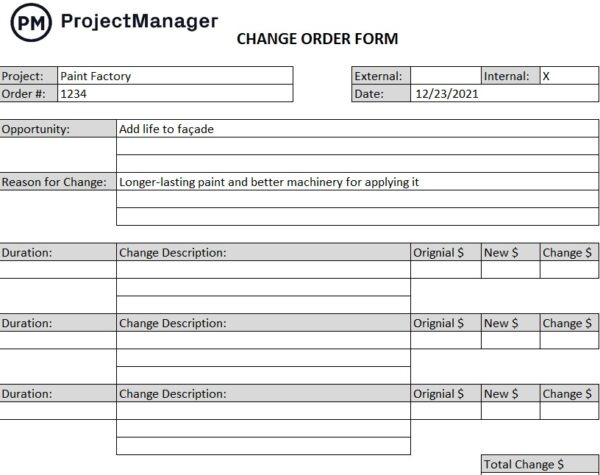
13. Change Log
A change log is a document that helps document any changes that have been implemented over time.

Change Management Plan Template
This change management plan template for Word combines all the templates above in one document. Download it for free so you can make a change management plan template for a project or organization just like the example above.

How to Make a Change Management Plan
Jennifer Bridges, PMP, breaks down how to create a change management plan in the following video. She explains how change is measured against the project baseline, which is the detailed description of the time, cost, scope and quality of the project that you have determined when planning. Therefore, a change management plan will take that baseline and ask how, what, when, where, why and how to figure out change and how to manage it.
After you watch the video, be sure to try some of our free templates below to help you manage change and your project.
Pro tip: There are different types of change management, and the best way to get a holistic understanding of it is through the triple constraint. There are processes established to help with the change management process, and it’s crucial to know them. Also, keep in mind that change management procedures vary depending on the industry you’re in. For example, change order forms are used primarily in construction to change the scope of projects.
Take it further: Sometimes, when tough changes happen during execution, technical debt can be accrued. Learn all about it and how to minimize it.
Go Beyond Change Management Templates with ProjectManager
ProjectManager is cloud-based work and project management software that connects hybrid teams to help implement change across an organization or project. Real-time data makes it collaborative to the core and multiple project views mean anyone in any department, no matter how, when or where they work can use it the way they want, whether in a task list, Gantt or kanban board.
You’ve seen how a Gantt chart can organize the change management plan but when that plan is assigned to teams that maybe work in a more agile environment, then they need a different tool. Kanban boards visualize workflow and workflows can be customized to automate task approvals, for example. Managers have control and transparency, while team members can manage their backlog and collaborate when planning sprints.

Track Change on the Dashboard
Monitoring change is how you make sure your actual progress is aligned with your change management plan. Our real-time dashboard gets live data and crunches the numbers to display metrics on time, cost and more in easy-to-read graphs and charts. It’s a status report whenever you need one so you can catch issues and resolve them before they cause problems.
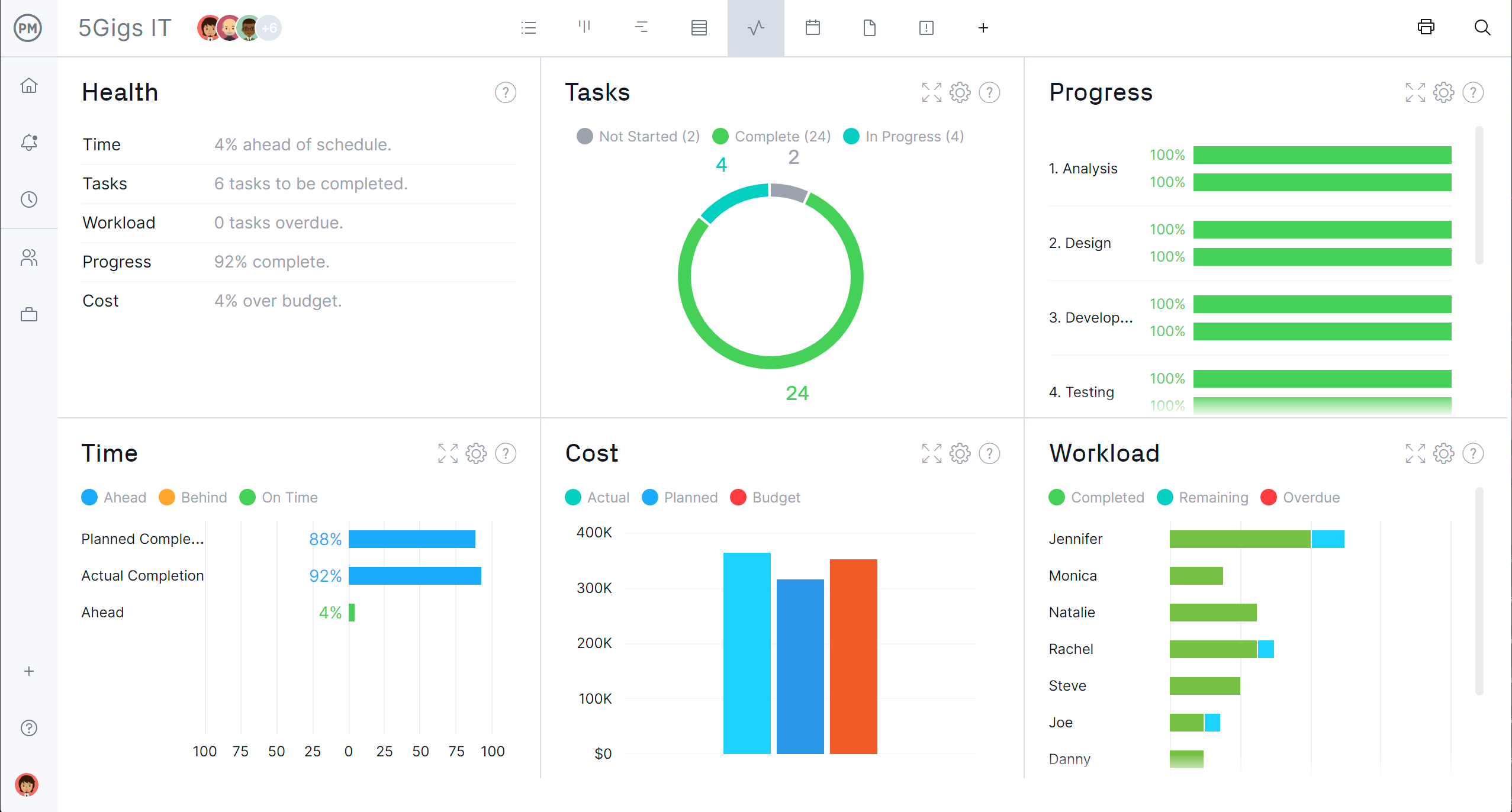
ProjectManager is award-winning work and project management software that connects teams for greater productivity. Manage change without impacting your schedule or budget. Get started with ProjectManager for free today!

